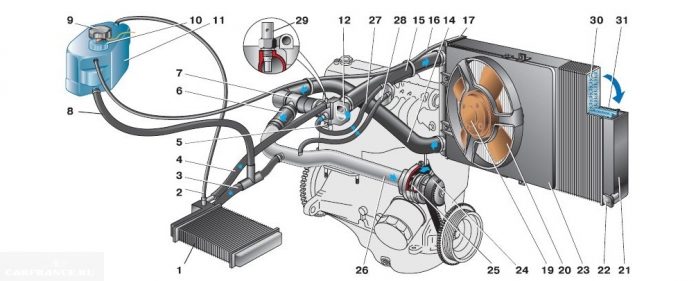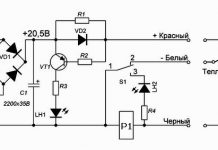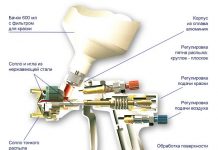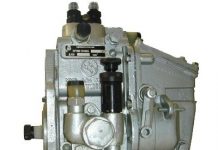Driver comfort is largely determined by the normal operation of the stove. In VAZs, it is this system that most often fails, and in order to quickly fix the problem, you need to know about the device of the stove, understand its circuit and understand well the principle of operation. This article will focus on the VAZ-2112 heating system.
The radiator is located horizontally under the dashboard. It is housed in a plastic casing. The design of the radiator includes two plastic tanks and a pair of aluminum tubes with pressed-in plates. There is a steam outlet on the left side of the tank. The passage of the intake air through the radiator depends on the position in which the dampers are located. If the dampers are in the extreme position, then the entire air flow may pass through the radiator or not at all.
If in older models of VAZs there is a crane with which you can shut off the flow of antifreeze to the radiator, then the VAZ-2112 is not equipped with a similar element. If the engine is running, the radiator will keep warm regardless of the season. A similar feature of the stove design allows you to achieve a slight inertia, which is inherent in the system during start-up. In other words, the required temperature will be built up in a shorter time. In addition, the user will not be faced with leaks that occur as a result of a leakage of the tap. The electronic control unit, which generates the necessary commands, is responsible for the ability to conveniently control the operation of the stove.
As we already know, a heater tap is not provided in the VAZ heater circuit. An air damper is provided to control the temperature regime inside the passenger compartment. This mechanism is responsible for regulating the flow of heated air. In the VAZ-2112, antifreeze is supplied to the heating system in a year-round mode, which does not suit all drivers. Therefore, some owners of VAZ-2112, 21124 and other models belonging to the tenth family additionally install a crane that allows you to control the supply of antifreeze.
The control of the VAZ-2112 stove is automatic, and the temperature error does not exceed 2 degrees. The presence of an air damper in practice turns out to be more preferable, since the valve has a tendency to acidify and jam. In short, heating with an air damper is less problematic and more reliable.
In VAZ cars of the tenth series, the supply and exhaust system is responsible for the ventilation of the cabin. The principle of its operation is to supply air to the interior of the passenger compartment through special openings that are located in the cover on the wind window. This process can be carried out independently while the machine is moving or forcibly due to the operation of the fan. There are also special openings for air outlet, which can be found between the upholstery and the interior door panels. Further, the air flow follows through the holes that are located at the ends of the doors.Through these holes, air can only escape, but not flow into the car, which is prevented by the valves. With such a ventilation system, we get more perfect thermal insulation and slow cooling of the cabin.
In order for the interior to warm up faster, and cold air does not come from the street, which is especially important when driving on dusty roads, a recirculation system is provided in the car. There is a recirculation button on the dashboard; when pressed, the electro-pneumatic valve is activated. Due to the vacuum, the recirculation flap, which is located inside the intake manifold, blocks the flow of outside air into the vehicle. The recirculation system can only be activated when the engine is running. When the fan is on, air circulation through the passenger compartment will continue, while the air ducts of the heating system will be activated.
The electric motor on the fan is installed of the collector type, with permanent magnets and constant current. If the rotational speed is maximum, then the indicator of the consumed current will be 14 A.
The electric motor can be powered by the on-board network or by means of an additional resistor. The first option of work implies maximum speed. In the design of the additional resistor, there are two spirals with different resistances of 0.23 and 0.82 ohms. When two spirals are included in the circuit at once, the fan rotates at a low speed. The inclusion of one 0.23 ohm coil allows the fan to run at medium speed.
The fan wheel must not be pressed off the motor shaft as doing so may imbalance. If the repair of the electric motor is required, it can only consist in cleaning the collector, if all other problems arise, it is necessary to replace not only the electric motor, but also the fan wheel.
To set the required air temperature, there is a controller or temperature sensor knob. The driver simply turns the handle and stops at the required division. The scale starts at 16 and ends at 30 degrees.
A temperature sensor is located on the ceiling of the cabin, which transmits information to the unit. When the difference between the set and actual temperature reaches a certain value, the unit activates the micromotor, which controls the dampers. The micromotor has a sensor that displays the position of the damper, it is called a ring resistor. The data from this sensor is transmitted to the control unit, which stops the operation of the micromotor at the required moment.
When the automatic mode is activated (position "A"), the speed regulation with which the heater fan rotates is added to the already existing operation of the control unit.
In the event of a breakdown of the control unit, micro-fan and temperature sensor, micromotor and sensor that displays the position of the stove damper, the possibility of repair is not even worth considering. Each of these parts will need to be replaced.
VIDEO
This is exactly what the diagram of the VAZ-2112 stove looks like, which now will not seem like a "dark forest" to you. To understand its structure is a matter of time and desire.
The best prices and conditions for the purchase of new cars
Heater ducts and controls: 1 - air ducts for heating the rear of the passenger compartment; 2 - floor tunnel lining; 3 - leg heating air ducts; 4 - central ventilation nozzles of the passenger compartment; 5 - side nozzles for interior ventilation; 6 - nozzles for heating the windows of the front doors; 7 - control lever for the interior heating system; 8 - air distributor housing; 9 - foot heating flap; 10 - windshield heating flap; 11 - heater.
There is no heater tap on the VAZ 2110, 2111, 2112. The temperature in the passenger compartment is controlled by an air flap that regulates the flow of hot air into the passenger compartment. Antifreeze enters the stove in the summer, because of this, some motorists additionally put a tap to shut off the supply of antifreeze during the summer period of operation. The VAZ-2110 heater control system is automatic, the temperature is maintained with an accuracy of 2 degrees Celsius. In addition, it is preferable to operate the air damper over the valve (it can sour or jam).
If necessary, the air entering the passenger compartment is heated by passing through the heater radiator and is distributed in accordance with the position of the air flow control knob. The bulk of the air is directed to the windshield and - through the deflectors covered by the flaps - to the side windows and into the center of the passenger compartment. Also, air is supplied to the feet of the driver and the passenger sitting in front through two pairs of deflectors (one pair at the knees, the other at the floor) and to the feet of the rear passengers through the pad on the floor tunnel and two air ducts under the front seats.
To accelerate the heating of the passenger compartment and prevent the entry of outside air into the passenger compartment (when crossing gaseous, smoky, dusty road sections), an air recirculation system is used. When the recirculation button is recessed (on the instrument panel), the electro-pneumatic valve opens, and under the influence of a vacuum in the intake manifold, the recirculation flap closes off the access of outside air to the vehicle interior. Thus, the operation of the recirculation system is possible only when the engine is running. At the same time, if the fan is turned on, the air in the passenger compartment continues to circulate, passing through the air ducts of the heater.
The fan has three operating modes: low speed, medium and automatic speed selection (determined by the control unit). The fan motor is a collector, direct current, with excitation from permanent magnets. Current consumption at maximum speed - 14 A.
Depending on the selected speed, the electric motor is connected to the vehicle's on-board network directly (maximum speed) or through an additional resistor. The latter has two spirals with a resistance of 0.23 ohms and 0.82 ohms. If both spirals are included in the circuit, the fan rotates at low speed, if only one (0.23 ohm) - at medium speed.
It is not recommended to press the fan wheel off the motor shaft - the balance can be disturbed. The electric motor cannot be repaired (except for cleaning the collector); if it fails, it must be replaced as an assembly with a fan wheel.
Heater parts (VAZ 2110 2111 2112): 1 - electro-pneumatic valve; 2 - front housing of the heater air intake; 3 - air intake water deflector; 4 - recirculation damper control valve; 5 - air intake recirculation damper; 6 - rear housing of the heater air intake; 7 - heater channel damper; 8 - heater control damper; 9 - radiator; 10 - heater radiator casing; 11 - union of the steam outlet hose; 12 - connection of the supply hose; 13 - outlet hose fitting; 14 - heater electric motor with fan; 15 - electric motor housing; 16 - support area of the heater control flap drive lever; 17- heater control flap drive lever; 18 - micromotor reducer of the damper drive; 19 - resistor; 20 - heater casing cover.
The heater (stove) radiator is installed horizontally under the dashboard, in a plastic casing, and consists of two plastic tanks (the left one with a steam outlet) and two rows of aluminum tubes with pressed-in plates. Depending on the position of the dampers, part of the intake air passes through the radiator (in the extreme positions of the dampers, all the air passes or does not pass at all), while the rest of it bypasses the radiator.
The air temperature in the cabin is set by setting the controller knob (temperature sensor) to the appropriate scale division (from 16 ° C to 30 ° C, with an interval of 2 ° C).
For fine adjustment of the control unit, it has a trimming screw. To check the accuracy of the temperature control, close all doors and windows, and place a reference thermometer next to the temperature sensor. Set the fan control knob to position A, and the temperature knob in accordance with the temperature measured by the control thermometer. If after 15 minutes the actual temperature in the passenger compartment does not correspond to the set one, remove the controller from the socket and turn the adjusting screw clockwise to increase the temperature and counterclockwise to decrease it. After adjustment, check the operation of the control unit again.
Possible checks and malfunctions of the elements of the heater heater VAZ 2110 2111 2112 and ways to eliminate them
1. If the interior temperature sensor is in good working order, the heater operation algorithm should be as follows: at maximum (red dot) - movement to open the damper; at the minimum (blue dot) - movement to close the damper, other positions are fixed depending on the temperature setting by the interior temperature sensor.
The characteristic temperature - resistance at the temperature sensor should be as follows:
The controller check is as follows. We take out the controller from the socket. We turn on the ignition, turn the temperature knob and measure the voltage on the pink and brown wires (long controller connector). If the voltage changes (it should turn on after changing the position of the temperature knob and turn off after about 13 seconds), then the controller is working properly, if not, then the controller needs to be changed.
We check if the voltage is supplied to the micro-reducer. Not everything is so simple here. To get to it, you need to remove the frill.We open the engine compartment. We unscrew the noise insulation, unscrew two gays for 10 fastenings of the frill, remove the wiper drives and unscrew the three fastening screws that are under the round plugs and move the frill, which completely interferes with the washer hose. We see two connectors. One is a damper position sensor, and the second is a micro-reducer drive, to which brown and pink wires fit.
Most likely, the following malfunctions are possible. 1. An additional resistor has burned out on the heater body, which makes it possible to regulate the speed - through it, in the “A” and “1” positions, the fan is connected. In this case, you need to get to the heater (this is only possible from the engine compartment) and replace the resistor. 2. The wires inside the controller are burnt out (to eliminate it, you need to disassemble the controller and replace them). 3. The wire has come off in the relay box located on the right under the hood.
It is necessary to check the temperature sensor of the passenger compartment and the level of antifreeze, since its low level affects the temperature regime (antifreeze, antifreeze may not enter the “stove” or it may become airborne due to a low level). It is also necessary to check the thermostat.
As you know, the purpose of the heating system is to provide more comfortable driving. In cold weather, operating a car with a faulty stove will be virtually impossible, since the heater simply will not be able to warm up the interior. What is the VAZ 2112 16 valve heating system, what malfunctions are typical for it and how to replace the radiator - detailed instructions are presented below.
In VAZ 2112 cars, supply and exhaust ventilation is used. In this case, the air flow enters through special openings that are located in the linings for the windshields. The air itself can be supplied either forcibly, under the influence of the heater fan, or arbitrarily. From the passenger compartment, the air flow comes out through the slots that are between the door panels, as well as at their ends. Special valves are built into these openings, which let the air flow outward, and also delay it from entering, which improves the thermal insulation in the passenger compartment.
A radiator device is used to heat the air flow, this unit sets the required temperature, as a result of which the air is heated.
The main elements of the heating system:
The radiator itself. It is installed in a plastic casing, horizontally under the control panel.
The design itself includes two rows of aluminum hoses, on which two plastic tanks are installed. On the left tank there are two fittings - through one, the drain is carried out, and through the second, the antifreeze enters the system.
Dampers are used to regulate the volume of incoming air. If these elements are set to the extreme positions, then the air flow will not enter the passenger compartment.
Another feature - unlike other VAZ models, in 2112 there is no heater valve designed to shut off the flow of antifreeze. Accordingly, when the engines are running, constant heating of the radiator device is provided, which contributes to the prompt heating of the passenger compartment. Due to the significant reduction in joints, the tightness of the system is largely improved.
What symptoms can be used to determine the malfunction of the heating system:
the consumption of antifreeze has increased, the volume of liquid in the expansion tank is constantly reduced;
the interior of the vehicle practically does not warm up;
under the bottom of the car, traces of antifreeze leakage began to appear, in the area where the radiator unit was installed or the location of the pipes, traces of refrigerant may also appear in the passenger compartment;
greasy marks began to appear on the inner sides of the glasses, the glasses themselves sweat a lot;
the smell of refrigerant in the car (the author of the video is the channel In the garage at Sandro's).
For what reasons, the VAZ 2112 stove does not work:
As for the choice, before buying, you must find out exactly which type of stove is installed in your car - old or new. Depending on this, the choice of a radiator device is made (the author of the video is the MegaMeyhem channel).
Due to the fact that the "dvenashka" can be equipped with an old or new type of radiator assembly, the procedure for replacing the device may differ. We will consider each of the options separately.
So, how is the stove radiator replaced in systems of a new type:
Regarding replacement in older systems:
In this case, you also need to drain the consumables, dismantle the frill, disconnect the throttles from the hoses and turn off the power to the heater.
After that, the expansion tank is removed, into which the liquid is poured.
Next, the vacuum booster is dismantled, for this, unscrew the two nuts with a 17 wrench and carefully remove the main brake cylinder. In this case, you will be as careful as possible so as not to damage the brake hoses. The vacuum booster hose must be removed.
After that, in the car interior, unscrew the four nuts from the brake pedal studs. The vacuum booster itself is dismantled along with the pedal.
So you were able to access the radiator device. You just have to unscrew the three bolts with which it is attached, and then replace the device with a new one. Assembly is carried out in reverse order, do not forget to pour antifreeze.
Depending on the manufacturer, as well as the version of the heater (old or new model), the cost of a radiator may differ. New radiators will cost the buyer an average of 350 to 1400 rubles, in the secondary market you can find a working radiator for 300-500 rubles.
How to properly repair a radiator by welding - the video below provides a visual instruction using the example of classic VAZ 2101-2107 models (the author of the video is the GARAGE channel. 6 by 4).
Unsuccessful ventilation and instability of interior heating are one of the main disadvantages of the VAZ 2112, which the manufacturer, apparently, is not going to eliminate.
Therefore, the revision of the stove on the VAZ 2112 is an exclusively personal matter of each owner, and whoever can cope with this task as best he can.
To understand what needs to be improved to improve ventilation and heating, let us recall the principle of organizing these processes in the VAZ 2112.
VAZ 2112 ventilation - supply and exhaust ... those. air is supplied to the passenger compartment either spontaneously, when the car is moving, or forcibly, with the stove fan turned on, and air flows are discharged through the valves installed in special holes at the ends of the doors, the gaps between the inner door panels and upholstery.
The figures show the heater and control elements.
How does the heater of the stove VAZ 2112 (2110, 2111) work?
Installed on the car automatic heater control system ... But it is also possible to regulate the temperature in the VAZ 2112 cabin with the help of an air damper.
Part of the intake air, depending on the position of the dampers, passes through the heater radiator, which is always heated (due to the absence of a shut-off valve).
Using the air flow control knob, the air, heated if necessary, is distributed in different directions: to the windshield, to the side windows, to the central part of the passenger compartment, to the feet of the driver and front passenger, to the feet of the rear passengers. In any case, it is so conceived.
Also provided air recirculation system - to prevent the ingress of polluted air from the street into the passenger compartment and to accelerate the heating of the stove. The recirculation system only functions when the engine is running. When the outside air is blocked (the recirculation button is pressed) and when the fan is running, the air, passing through the heater ducts, circulates in the passenger compartment.
About the fan. It can operate in one of three modes:
at low speed
at medium speed
in automatic mode
... The automatic mode algorithm is completely determined by the electronic control unit.
The temperature level in the passenger compartment is set by a switch on the controller ... Temperature range - from 16 degrees Celsius to 30, in 2 degrees increments. The control unit receives information about the temperature in the passenger compartment from a sensor located on the ceiling (the sensor is equipped with a controlled fan control unit). As a result of comparing the set and real temperatures, the micromotor is turned on by software, which receives a control signal from the heater flap position sensor and changes the flap position, calculates the optimal fan speed (if the fan switch is in position "A"). When the damper reaches the preset position, according to the signal from the sensor, the micromotor is turned off.
To fine-tune the temperature algorithm operation of the control unit, you can use the adjusting screw ... To do this, set the fan operating mode switch to the "A" position, close the windows and doors, place the control thermometer next to the interior temperature sensor (secure with tape), increase the set temperature by 2 degrees. If everything is normal, after 15 minutes the required and actual temperatures will equal. Otherwise, turn the adjusting screw: counterclockwise to decrease the temperature, clockwise to increase. Measure again.
Keep in mind that the devices: control unit, damper position sensor and micromotor, temperature sensor and micro-fan cannot be repaired, only replaced.
high consumption of coolant coolant (antifreeze or antifreeze) in the vehicle cooling system (antifreeze or antifreeze);
the heating of the car interior does not work;
traces of coolant leaks on the asphalt under the heater radiator or leaks in the hoses supplying fluid to the stove;
the smell of antifreeze in the cabin;
greasy deposits on car windows, fogging.
In these cases, first of all, check the tightness of the system hose clamps. Perhaps they are the cause of the leaks.
And now about how the radiator of the VAZ-2112 stove is replaced with 16 valves of different samples
These heaters were installed on the early 21120 models. You can determine the modification of the system by its appearance, having previously removed the car's jabot.
Perform points 1, 4-7 of removing the cooling system of a new sample.
We dismantle the expansion tank of the cooling system.
We remove the vacuum booster by unscrewing 2 nuts by 17 and carefully (without damaging the brake pipes) move the master brake cylinder to the side. We remove the tube of the vacuum amplifier.
Inside the car, unscrew 4 nuts from the brake pedal studs and remove the car amplifier together with the pedal.
Thus, we got access to the heater radiator, which is fastened with three screws. We carry out its replacement and assembly of the entire system in the reverse order.
Now you can pour antifreeze or antifreeze into the system. We warm up the engine until the stove fan turns on. We check the temperature in the cabin with different modes of the heater, the operation of various electrical equipment and the dashboard.
If, after the repair, the pipes of the stove remain cold when the heating is on, then an air lock may have formed in the hoses of the system.
All major elements are described below.
Now that you know the whole scheme of the VAZ-2112 cooling system, you should learn more about all its main details:
Copper cooling heatsink
The radiator is designed to cool the fluid in the system when it passed through it in the so-called "big circle" ... It is made of aluminum, has a tubular-plate, two-way design, equipped with plastic tanks, one of which has a special partition for the passage of coolant. The liquid, for passage along the "big circle", flows through the upper branch pipe and exits through the lower one.
This tank is quite reliable, but its connections sometimes have to be checked for leaks.
The expansion tank made of translucent polyethylene is designed for filling and controlling the coolant. When the system is completely filled with fluid, it should be in the reservoir between the "MIN" and "MAX" marks. The tank contains two branch pipes for removing steam, one from the heater radiator, the other from the cooling radiator.
Two types of expansion tank caps.
The tightness of the cooling system is ensured by the expansion tank cover, or rather its inlet and outlet valves. The exhaust valve maintains an increased pressure in comparison with atmospheric pressure on a hot engine. due to which the boiling point becomes higher, reducing the loss of steam.
The thermostat is designed to distribute the flow of coolant by controlling its temperature. On a cold engine, the coolant circulates only in a small circle, passing through the heater radiator and the heating block of the throttle assembly. When the temperature rises to 87 ° C, the thermostat valve starts to open, and reaches full opening at 102 ° C, letting the liquid go in a “big circle”. The thermostat for the VAZ-2112 has an improved throttle orifice resistance, due to which the fluid flow increases.
The more blades a pump has, the better.
The pump is designed to circulate the coolant in the system. A pump is a pump. It is vane, driven from the crankshaft by a timing belt. In the event of a "pump jam", the timing belt will break, so monitor and check its condition. The pump body is made of aluminum, on the front end of which a toothed pulley is pressed, on the other an impeller. If it fails, the timing belt will break, it will not bend the valve at 124 engines, but at 21120 it will. Therefore, follow the pump replacement schedule and choose a good pump.
The fan can be supplied with one or two motors. If it does not turn on, then check the fan relay.
The engine operating mode is maintained by a thermostat and a fan. The latter is made of plastic and has four impellers that are mounted on the motor shaft. The engine is turned on by a command from the sensor through a relay by a signal from the ECU. when the coolant temperature reaches a temperature of 99 ° C, and turns off at a temperature of 94 ° C.
The sensor should be checked and replaced if necessary.
To control the temperature of the coolant in the system, a special sensor is provided. It is mounted in the cylinder head and linked to the indicator on the instrument panel.
This element is indispensable in cold winters.
The heater radiator is designed to heat the air entering the passenger compartment. It is connected directly to the cooling system, and antifreeze is constantly circulating through it.In order to heat the air in the passenger compartment, the air is directed to the radiator, and when this is not required, the air bypasses it enters the passenger compartment.
Most often, antifreeze is poured as a coolant.
TOSOL is most often used as a coolant on the VAZ-2112. in total there are about 6 liters of it in the system.
Video (click to play).
It is highly discouraged to use water, as it causes active corrosion for an aluminum radiator.










